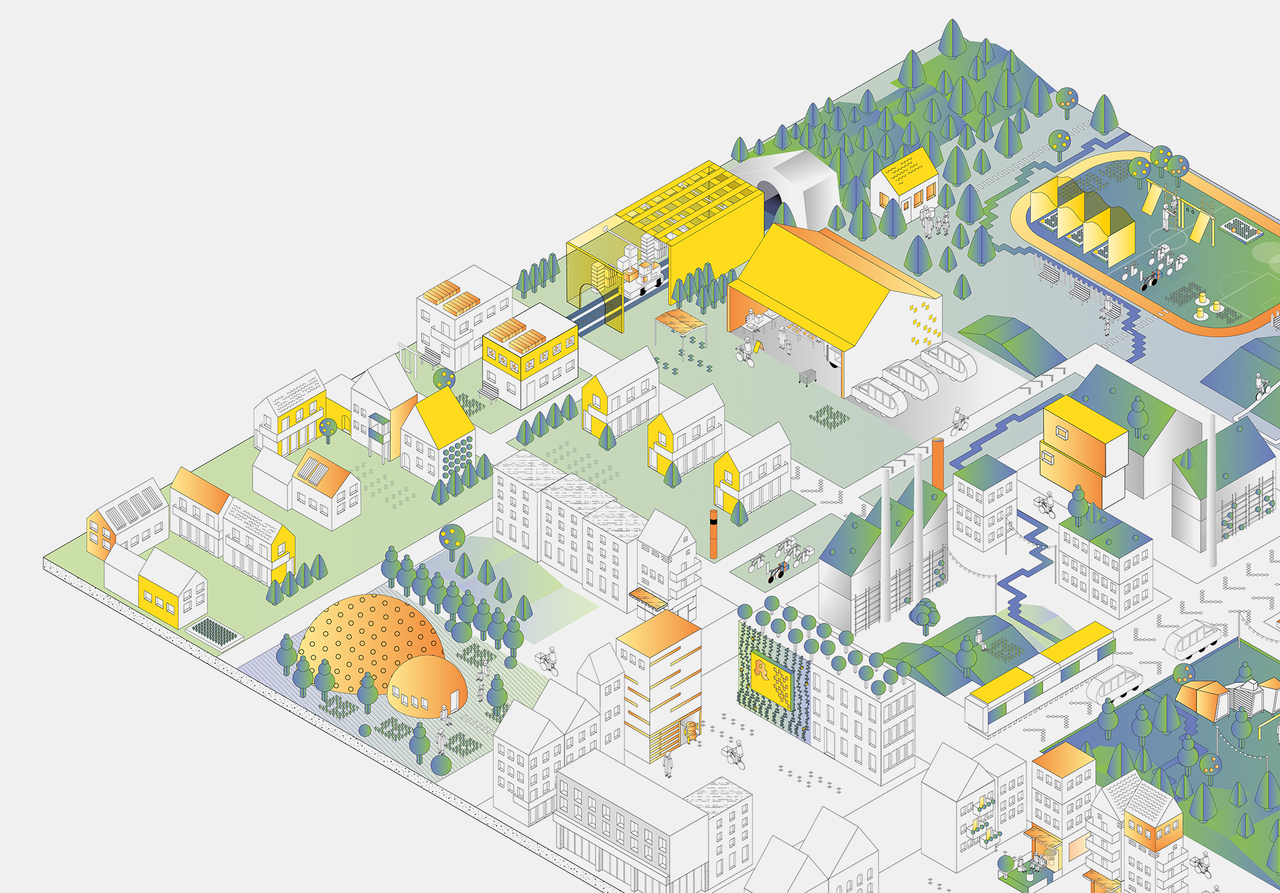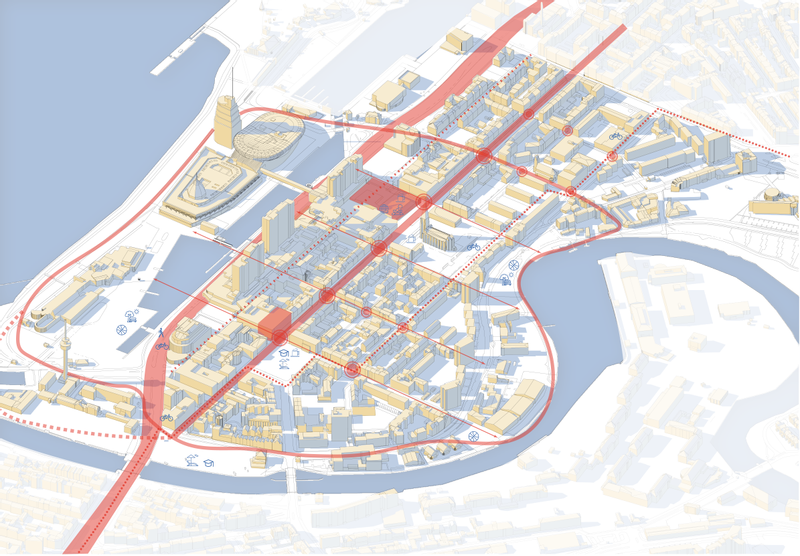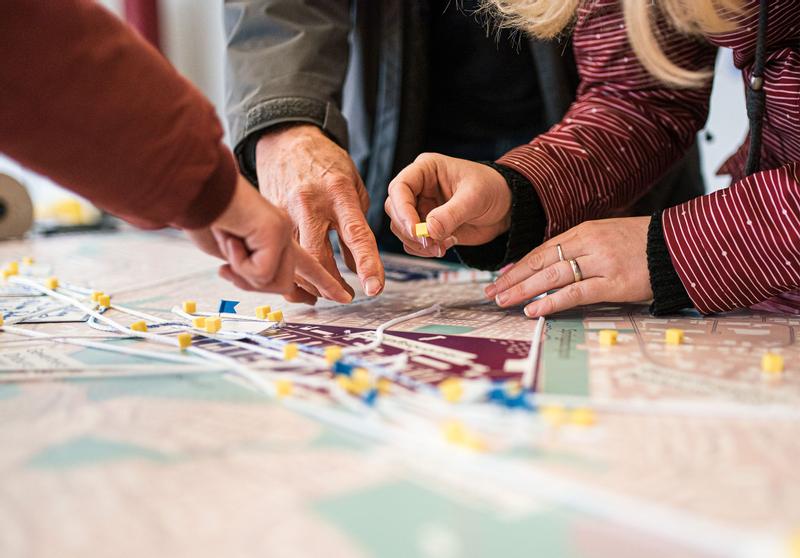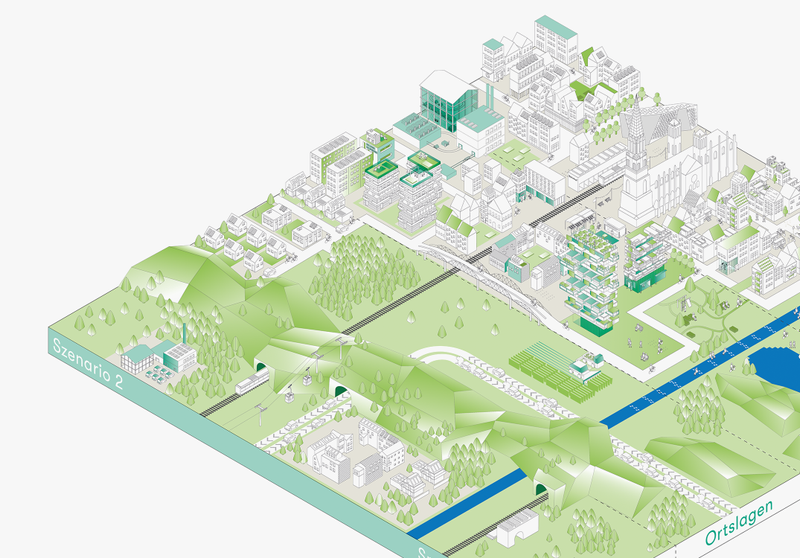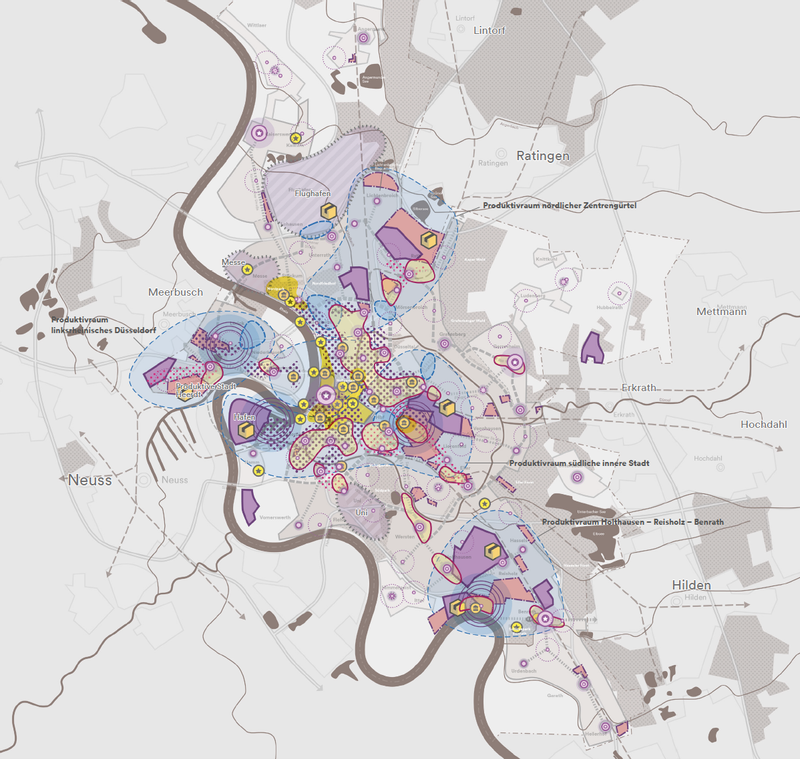Future can be shaped
The city of the day after tomorrow
That was the premise of the "City of the Day After Tomorrow" project commissioned by the Federal Institute for Research on Building, Urban Affairs and Spatial Development (BBSR). The aim: not to predict the future, but to provide a solid overview of urban future issues and municipal design options. In a first research project (2016 - 2019), urbanista illuminated the broad field of future trends in collaboration with Futur A. The so-called trend molecules illustrate which long-term developments will shape urban spaces in the day after tomorrow. Together with experts and local actors, we identified influencing factors and development paths and used them to formulate future narratives for various German city types. In the subsequent research project (2019 - 2022), we not only updated the trend knowledge, but also developed and tested working materials for municipal future discourses throughout Germany. The method kit, which is available through the BBSR, offers municipal actors and city makers of all kinds the opportunity to independently conduct future discourses, initiate the conversation about their local future, and thus actively shape it.
2016 - 2022
Federal Institute for Research on Building, Urban Affairs and Spatial Development (BBSR)
Björge Köhler, Julian Petrin
From thinking about the city of the day after tomorrow to empowering city makers
We live in uncertain times - also with regard to the ability to plan the city. Our world is becoming increasingly complex, interrelationships confusing and the future ever more unpredictable. Today, urban development is influenced by a multitude of trends and drivers: whether artificial intelligence, demographic change, energy transition or climate change. In recent years, the future of cities has therefore become a hotly debated topic - not only in public debates, but also in research. The focus is usually on "tomorrow": a period of 10 to 20 years that seems tangible and predictable. However, urban development policy - which often already makes decisive decisions today for future generations - must also focus on the long-term development of cities in addition to the urgent challenges of the near future. The research project "City of the Day After Tomorrow" is dedicated to this perspective.
Shaping the future means: thinking today about the day after tomorrow
In order to prepare for possible futures in good time, municipalities must break away from the usual planning horizons and dare to take a look into the day after tomorrow: Which trends foreseeable today can shape urban life in the long term? Where do we need to prepare for uncertain future prospects? And what guard rails can we identify for future developments? This is where the project "Thinking about the City of the Day After Tomorrow" came in. The ambitious goal: to provide orientation in the confusing landscape of trends. To this end, we identified trends relevant to space and cities, classified them, discussed their impact on selected city types and specific sub-areas, and explored design options with actors at the federal and local levels. The research results are described in detail in the online publication "Thinking about the city of the day after tomorrow".

Making the complex trend landscape manageable with trend molecules
The greatest challenge was to break down the complexity of the trend discourses. Extensive research initially resulted in a collection of over 150 individual trends. In order to make these small trends manageable, we condensed them - in dialog with external experts and representatives of the federal government and the BBSR - into so-called trend molecules: from human-machine life to the differentiation of working conditions and the increasing risk of poverty to the algorithmization of urban systems. This methodical approach made it possible to bundle individual trends into relevant interrelationships and to provide a comprehensible overview of the complex trend landscape. The result: a compass for the future thicket. The trend molecules thus not only offer city makers orientation in confusing times, they also form the basis for many other of our projects - be it Kiel 2024, Freiburg Future Scenarios 2040 - and are fundamentally used in our workshops and participation methods.
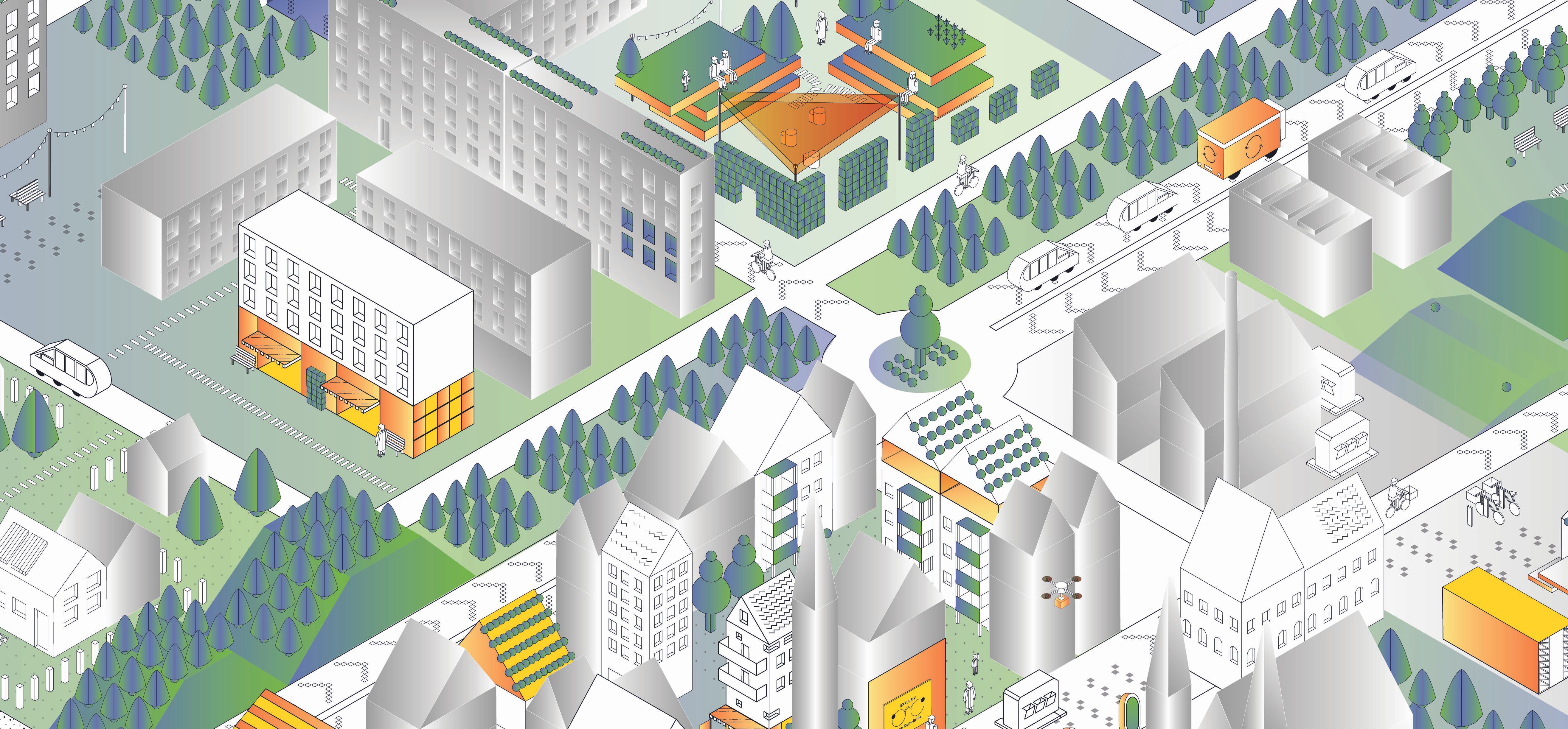
A method case for the engagement with urban future
With "Thinking about the City of the Day After Tomorrow," we did pioneering work in the field of urban futurology: For the first time, a systematic and holistic collection of trends was created with a focus on urban development in the German-speaking world. It quickly became clear that the methods tested and insights gained were only a first step, which must be followed by others. In order to anchor thinking about the future of cities in municipal practice, accessible working materials for dealing with the future are needed. The goal of the second research project, "City of the Day After Tomorrow: Discourses on the Future and Working Materials," was therefore to develop working materials and methods for independently conducting discourses on the future at the municipal level. In this way, a freely available method case was created that provides city makers with comprehensive materials (workshop formats, videos, etc.) for independent engagement with trends and the exploration of possible futures. In the process, we were also able to gain overarching insights into the most pressing future issues facing German municipalities.

The conversation about future makes future
In a continuous exchange with experts, we gradually approached the question of what a good set of methods for municipal future discourses needs. We then tested the working materials for their practical suitability: In a total of seven future discourses with structurally different model municipalities, we continuously developed the formats and methods. The scope of the future discourses varied between one and four workshops, which, in view of the Corona pandemic, took place predominantly digitally. The spectrum of participating municipalities ranged from a prosperous large city in a central location to a rural municipality and a peripherally located small town. The reasons for the discourses on the future were also varied: sometimes it was a general discussion of trends, then a planning process was the starting point, while another municipality was concerned with a very specific issue. A central finding of the research project was that talking about the future makes the future. Discourses about the future can initiate concrete changes and generate responsibilities. The publication "City of the Day After Tomorrow" provides a solid set of tools that encourages city makers of all kinds to put the day after tomorrow on the agenda, to set the course in the desired direction early on and to actively shape their urban future.
